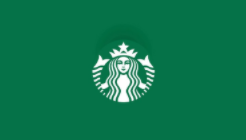

Creating consistent and impactful brand messaging in the coffee industry is paramount for a global brand. Ensuring that every employee contributes to a unified message is a challenge, yet crucial for shaping the desired brand perception. Explore strategies for maintaining a cohesive brand message across diverse locations and audiences.
Crafting a Brand Messaging Guide is crucial in the coffee industry. This tool empowers employees at all levels to channel their creativity effectively, ensuring that communication resonates with the brand’s core values. By leveraging this guide across departments, offices, and teams, brand ambassadors can unlock their full potential, contributing to a unified and impactful brand message within the competitive coffee industry.
Brand Messaging in Action
Consider the difference between the brand messaging of Costa Coffee and Starbucks:

Costa Coffee brand messaging Starbucks brand messaging
In the dynamic coffee industry, mastering brand messaging is paramount. Take Starbucks, for instance, where the messaging is friendly, personal, and human, exemplified by the unique name “Gessika” and the approachable smile of the barista. Conversely, Costa Coffee opts for a professional tone, emphasizing its culture as the largest and oldest coffee brand in the UK. Proper English grammar and a formal prose stand alongside an expert-looking barista, effectively communicating the brand’s rich heritage. Understanding and refining brand messaging is key in navigating the competitive landscape of the coffee industry.
The two brands tell two very different stories. But how did they arrive there?
Brand messaging involves two different aspects: Content and Expression. Content – “how to structure the message” – is specific to the client, and the Brand Messaging Guide will extract specific description points that can be leveraged in communication based on the brand’s positioning. The Expression – “how the message sounds” – can be trickier to pinpoint, and is a pain point for many brands.
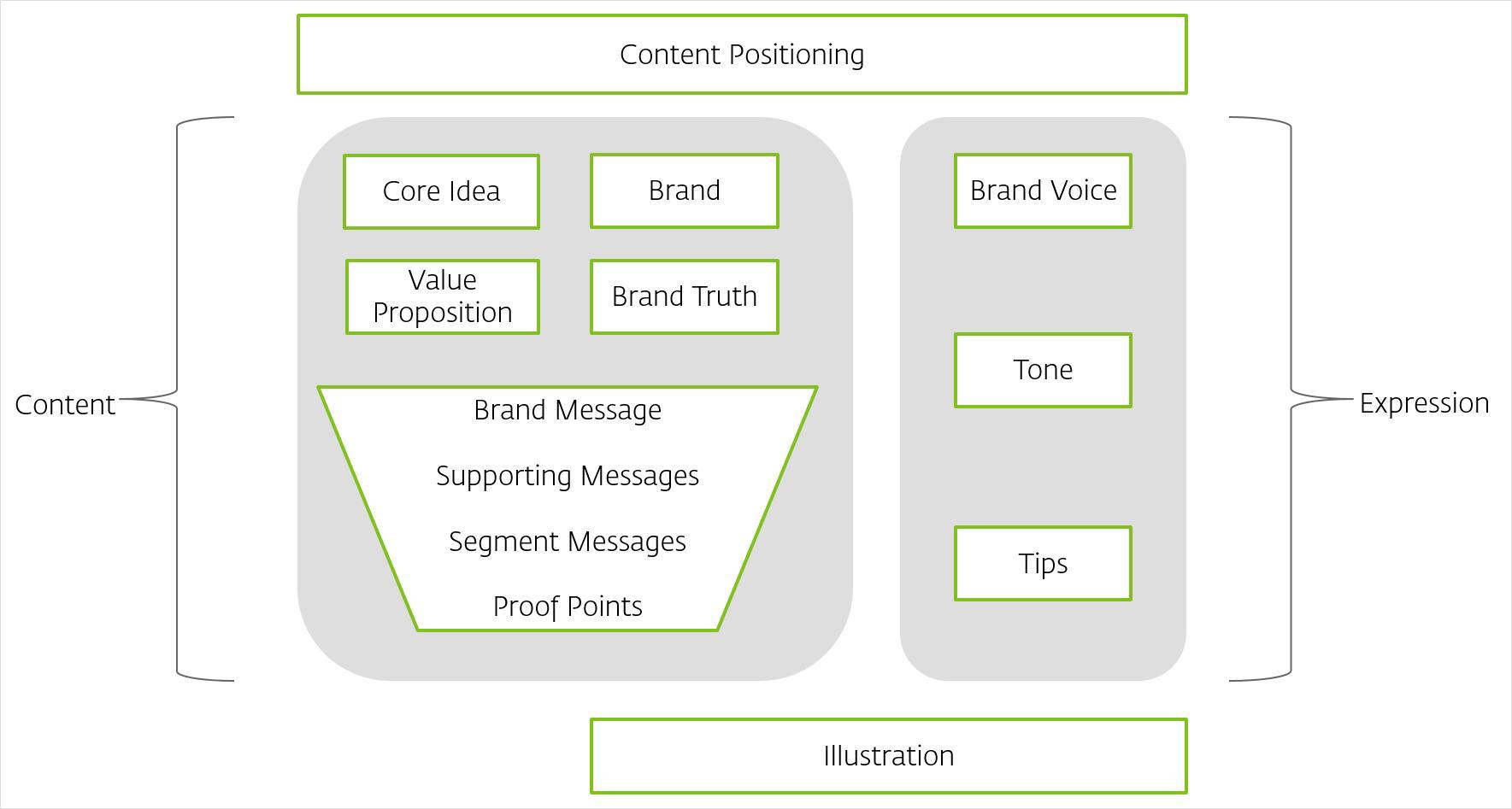
Brand Messaging Guide development process
Here we’ll take a look at the five steps of developing a Brand Messaging Guide:
Step 1: Brand Positioning
The first step in creating a Brand Messaging Guide is a clear brand positioning. Develop a full internal positioning that includes the brand’s core idea, value proposition, brand truth, and brand benefits. By starting from a strategic perspective we can craft messages that better resonate with our brand’s target.
For some, the brand positioning has been defined and refined dozens of times over the brand’s life. This is an extremely powerful foundation to have when entering a new market, but should not be copied over directly when a brand seeks to localize: the brand positioning must still be expressed in the way most relevant to the local market.
Let’s continue to explore this progression through a real-life brand that is renowned for its powerful brand messaging: Starbucks.
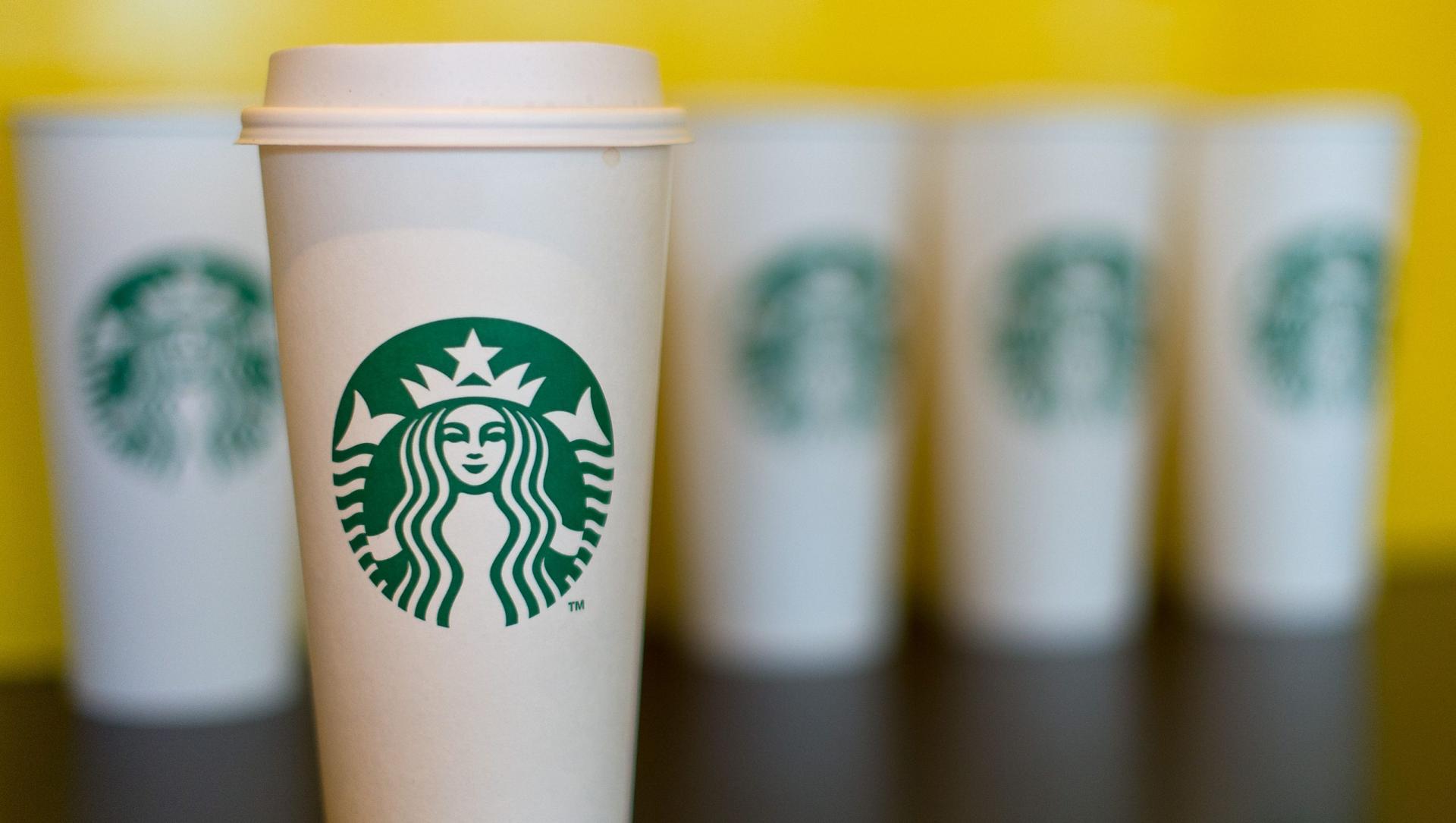
While the true brand positioning of Starbucks is kept under lock and guard somewhere beneath Fort Knox, let’s say for a minute we do know the brand’s official positioning. For the sake of simplicity let’s focus on the core idea: personal service.

Step 1: Brand Positioning
How can a brand’s messaging reflect this core idea in communication?
Step 2: Brand Voice
A brand’s positioning includes several aspects, including brand voice. However, fundamental brand positioning elements must be determined first, such as core idea, value proposition, brand benefits, and brand truth. From here, a brand voice can be precisely determined.
What is a brand voice? In short, 3-5 descriptors that build upon the brand’s core idea. This voice remains constant, no matter the context.
If Starbucks’ positioning is personal service, for example, its voice could be refreshing, interactive, accommodating, genuine, and personal.
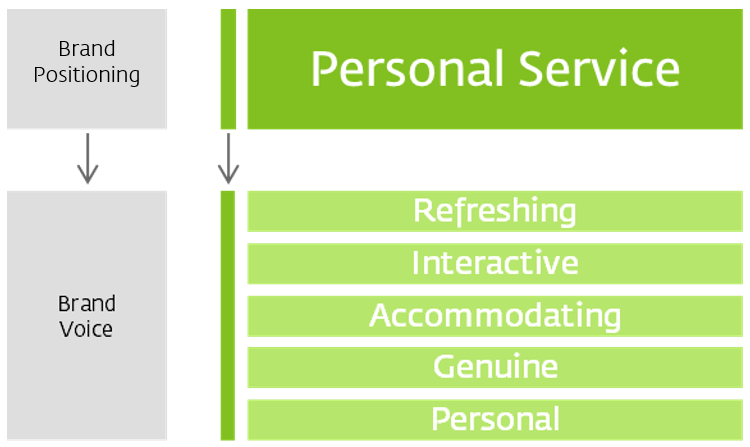
Step 2: Brand Voice
Discovering this voice depends on several factors. What do you want people’s first reaction to be? What emotion are you trying to convey? Does your business or industry have common or implicit communication themes? How are competitors explaining their brand?
Brands in different industries are certain to have different voices to connect best with their targets, and oftentimes brands within the same industry will want to highlight different aspects of their core competencies.
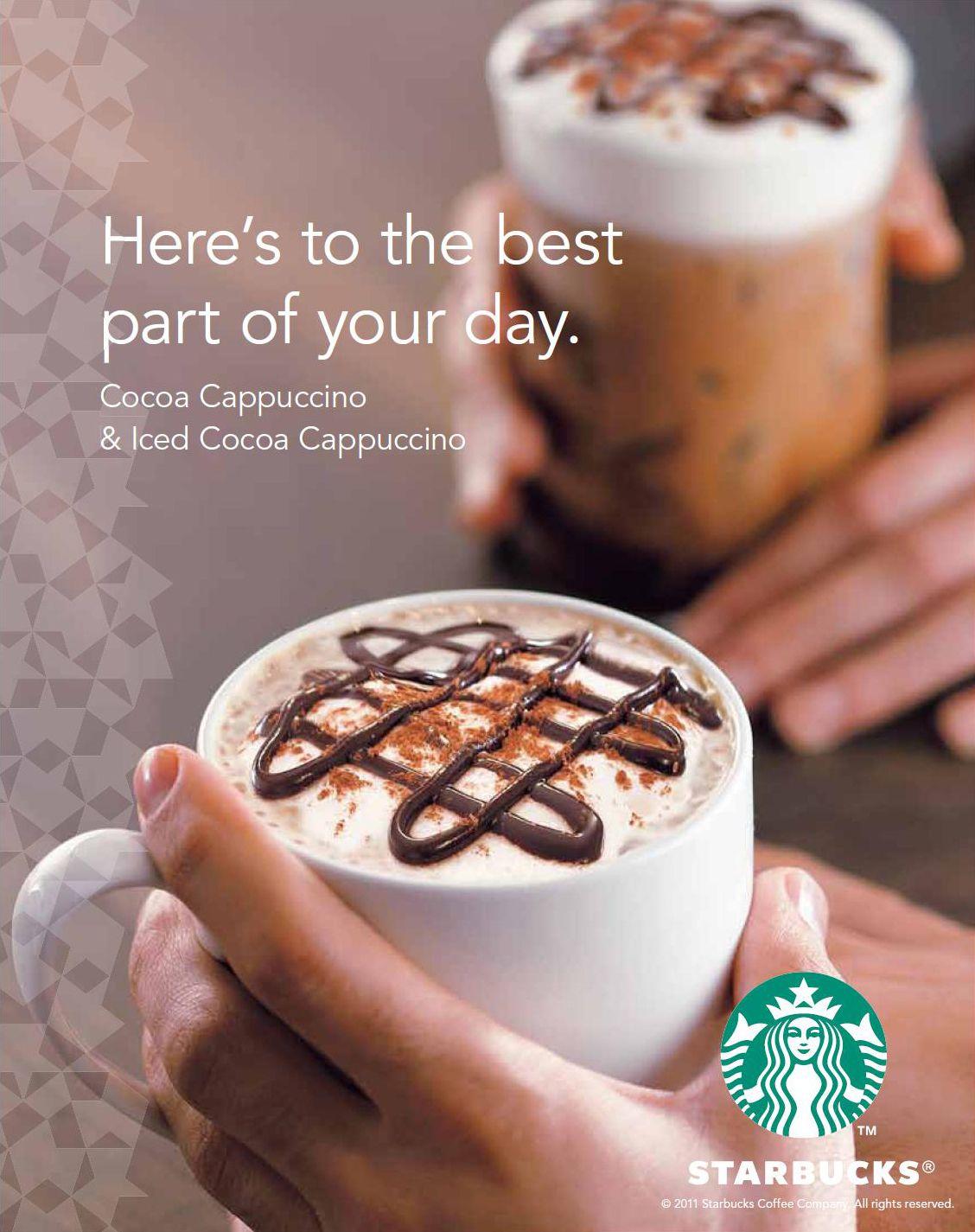
A food brand, for example, will choose an active, friendly and lively Brand Voice while a technology brand may be better suited for a professional and reliable one. However, another technology company targeted towards millennial consumers may choose a more creative, upbeat brand voice.
Simply put, analyze your brand positioning and extract a more in-depth description of your brand voice.
Step 3: Tone
When the brand voice is settled, we can move on to tone. Whereas a brand’s voice remains consistent, tone shifts according to the context.
What context, you might ask? The most accurate way to shift your brand’s voice is by the purpose of the communication – what the brand or the target is trying to achieve.
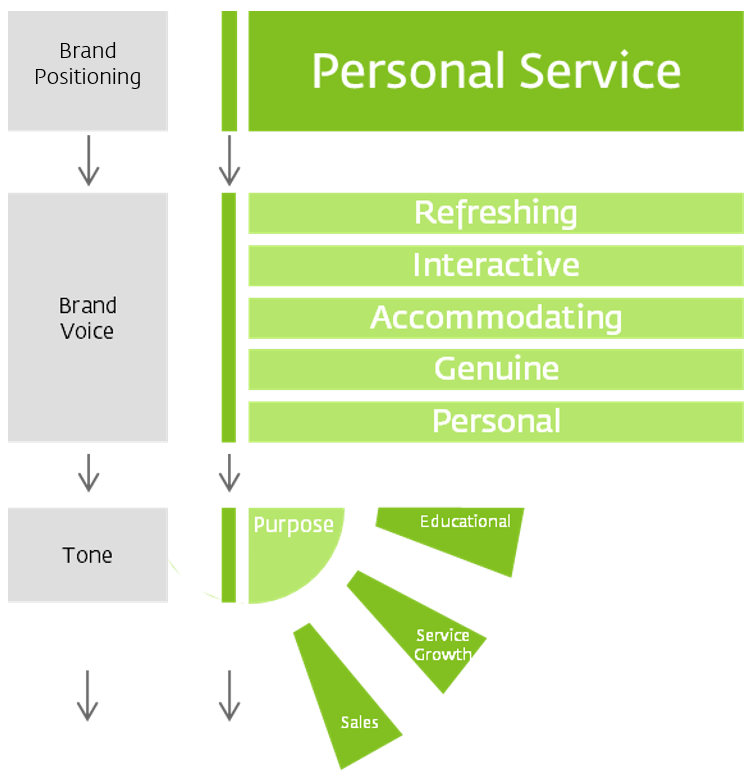
Step 3: Tone
Let’s say that Starbucks has three different purposes: educational, service-growth, and sales. Each one of these purposes would suggest a different tonality: Starbucks’ service-growth communication, for example, could further highlight collaboration, openness, and sharing, as shown below.
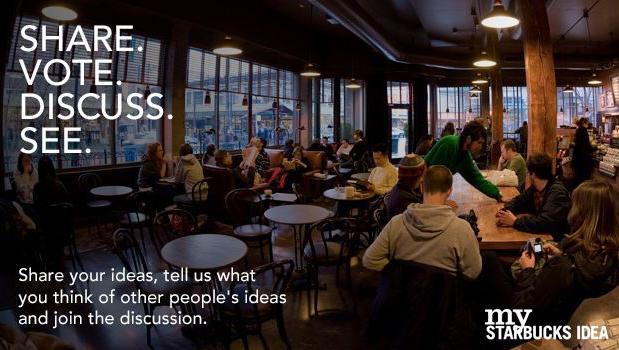
Keeping your brand’s voice consistent and recognizable is important. But striking the balance between steadiness and a level of dynamism and flexibility is the foundation of truly powerful brand messaging. Emphasizing a tonal layer that provides direction based on purpose allows brand ambassadors to combine the essence of the brand with the environment’s characteristics, to craft messages best suited for their purpose.
Step 4: Tips
Once the tone has been has been settled, some seek to apply it directly into communication materials, but in our experience this can be risky approach. Especially for larger companies invested in more than one city or office, the output of this messaging could be interpreted differently – across cultures, regions and countries.
Therefore we add a clarifying dimension to the Brand Messaging Guide: communication tips. This detailed section explains how to leverage your brand’s voice and tone in the most effective way, whether in writing a tweet, crafting an email or in a casual conversation.
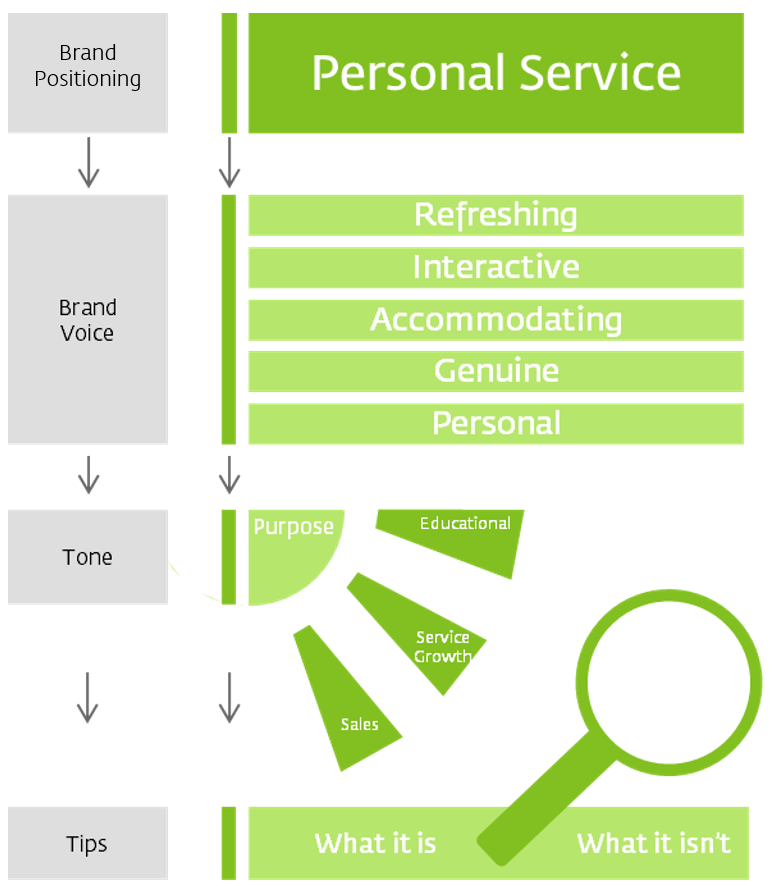
Step 4: Tips
Say, for example, you are a Starbucks creative copywriter but not sure how the brand communicates when being educational – should you use the words “love” and “teach” together? How exactly can you define an “embracing” tonality?
By detailing communication tips, brand ambassadors and employees can have a point of reference for many different scenarios, providing guiding principles and sparking creativity. The result is a unique messaging system that embodies the brand at its core.

Step 5: Illustration
The foundation of brand messaging has already been established through defining the brand’s positioning, the brand voice, the contextual tone, and the communication tips. So how can we bring this all together?
Illustration involves providing a complete set of examples to teach brand ambassadors on a visual and kinetic level how to apply what they’ve learned. It takes an employee through multiple use-cases, giving a streamlined set examples that they can base future creations off of.
With each example situation, the messaging can be built from the foundation forward, touching on all elements of the brand messaging process.
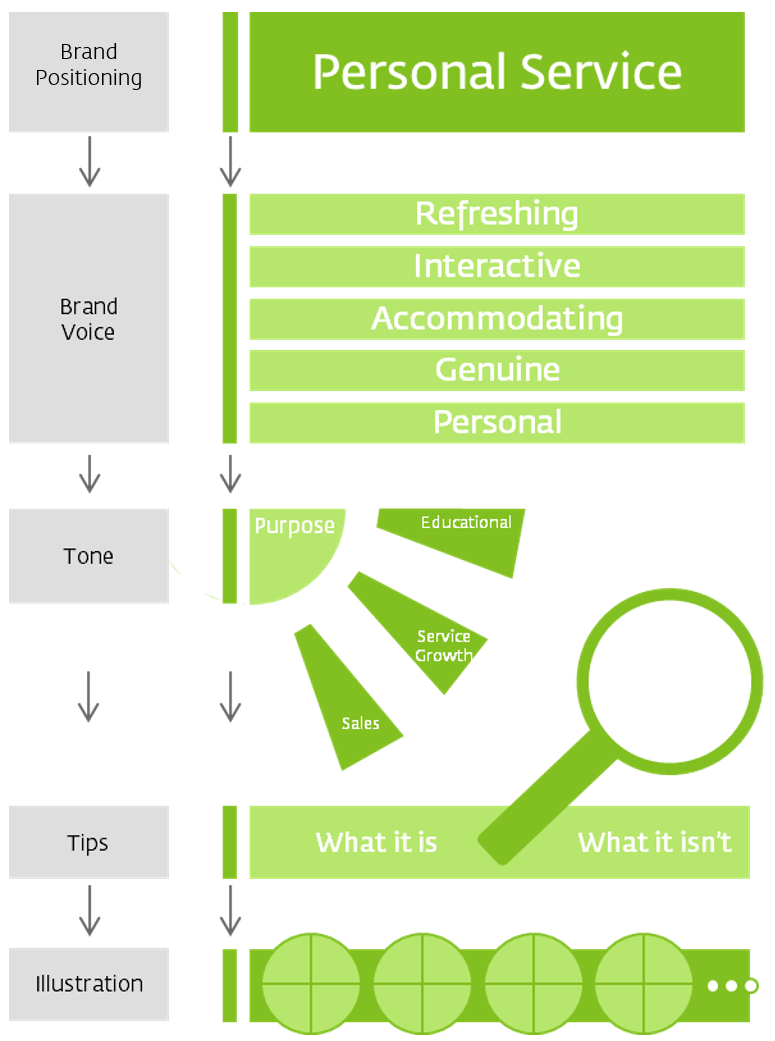
Step 5: Illustration
At the end, you have a versatile and comprehensible messaging guide that brand ambassadors can look to to learn, grow, and develop their brand’s influence.
Conclusion
Crafting brand messaging is difficult. All communication must stem from the brand’s perspective and to the target: it must embody the brand’s core idea. However, it cannot be “scripted” either. Different situations require different emphasis, and certain touchpoints may use slightly different language. On top of it all brand ambassadors must be free to add their own flavor of creativity to the messaging. This balance between consistency and uniqueness can be a major pain point for brands.
By beginning with your brand positioning, determining brand voice, channeling the tone, showing communication tips, and illustrating it all through examples, you can create an effective Brand Messaging Guide to lead your brand towards flexible communication, more relevant messages, and a base of more Knowledgeable consumers.
A Labbrand Group Company © 2005-2025 Labbrand All rights reserved
沪ICP备17001253号-3To improve your experience, we use cookies to provide social media features, offer you content that targets your particular interests, and analyse the performance of our advertising campaigns. By clicking on “Accept” you consent to all cookies. You also have the option to click “Reject” to limit the use of certain types of cookies. Please be aware that rejecting cookies may affect your website browsing experience and limit the use of some personalised features.